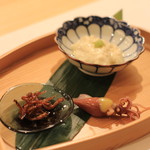
夷川 鮨 すずか
Ebisugawasushisuzuka ◆ えびすがわ すし すずか
3.31
Imperial Palace Area
「Sushi」
10,000-14,999円
--
Opening hours: 17:30-22:00
Rest time: Open irregular hours and closed days are subject to change, so please check with the store before visiting.
京都府京都市中京区俵屋町305 FORUM夷川 1F
Photos
(20)

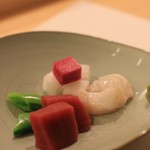
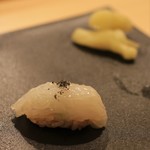
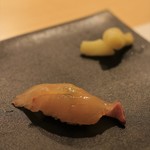

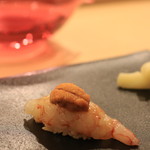
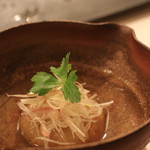
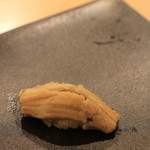
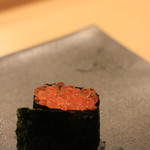
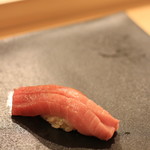
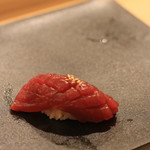
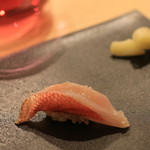
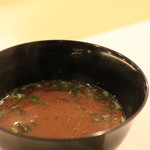
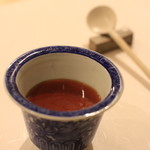
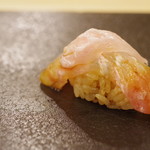
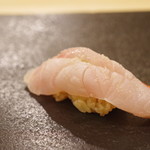
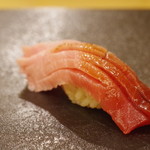
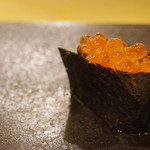
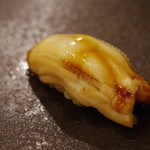
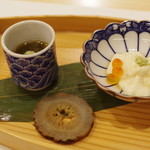
Details
Reservation Info
can be reserved
Payment Method
(credit) card accepted
Number of Seats
8 seats
(8 seats at counter only)
Smoking and Non-Smoking
No smoking at the table
Facilities
Calm space, counter seating available
Drink
Sake available, shochu available, wine available, focus on sake
Dishes
Focus on fish dishes
Comments
(20)
とらかめ
3.80
The atmosphere is gentle with a touch of freshness in this restaurant. The flavors start off gentle and gradually build up to a punchy sushi experience. Begin with Kinmedai and Nodoguro for a punchy start, followed by a warm sauce topping to finish. Then, enjoy the aged Maguro, Toro, and Uni. Finally, savor the light Anago beautifully presented. The flow of the sushi, with its gentle flavors, showcases the wonderful personalities of the head chef and the hostess. This is definitely a must-visit restaurant!
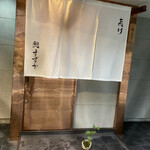
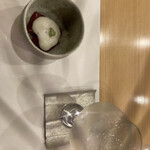
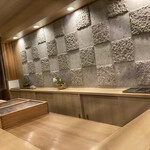

やまさんやまたん
3.50
This is a cozy Japanese modern restaurant with a calming atmosphere, featuring a counter-only seating. The sushi ingredients are aged, offering a rich and velvety texture with great umami flavor that pairs well with alcohol. I'm not sure about the details, but I heard they use a special hidden knife, resulting in a smooth and delicate taste. Thank you for the delicious meal.
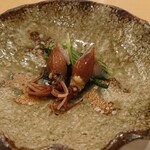
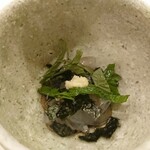
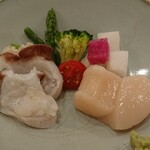
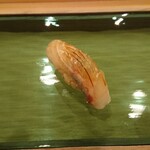
tak98002
4.00
This restaurant serves delicious Edomae sushi in a bright and elegant setting, where you can enjoy a pleasant time. The entrance, with its imposing design, may seem intimidating, but once inside, you are greeted by a friendly female owner and head chef. Starting with a bottle of beer, the dishes keep coming, each one delicious and meticulously prepared. I may not know exactly what makes them so good, but the meal made me feel happy and reluctant to finish, a rare quality. When told it was the last dish of the omakase, I wanted to extend the experience and requested a few more items. It was a very satisfying and delicious Edomae sushi experience. I look forward to going back. Thank you for the meal.

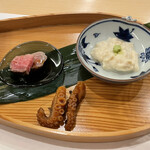
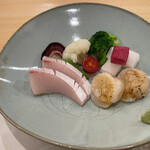
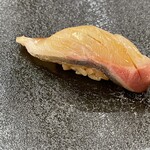
jetsail
4.00
I visited the sushi restaurant "Suzuka" on the Echigawa Street, where I used to go frequently in the past. It had been a while since my last visit, as reservations need to be made well in advance nowadays. The restaurant is located about a 10-minute walk from Marutamachi Station on the subway. The interior has a spacious feel with an L-shaped counter that seats about 8 people. The menu seems to have been unified to the "Okimari" course priced at ¥12,000 excluding tax since February 2019. The dishes I had that evening included grilled shirauo, Omi red konjac, yuba, maguro, kanpachi, Hokkaido octopus, ikura, snap peas, daikon dice, Kyoto carrot, and vegetable sesame soy sauce nigiri, among others. The quality of the ingredients seemed to have improved, and I thoroughly enjoyed the meal in the pleasant atmosphere. It is one of the sushi restaurants that I feel a special connection with (in my own little world). It was another enjoyable evening spent in a good mood. Thank you for the wonderful meal.
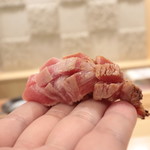
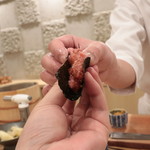
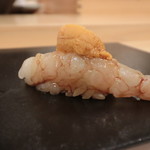
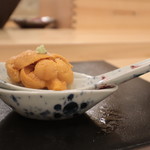
Ranntama
4.20
I was surprised to find such delicious sushi in Kyoto. The head chef trained in the Kanto region and apparently sources the fish from Tsukiji. It's a bit pricey, but considering the shipping costs, I think it's reasonable.
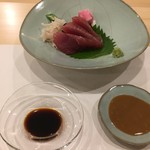
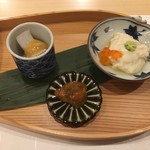
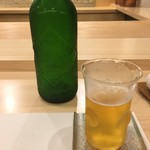

0560s
3.90
We made a reservation in advance and three of us dined at the restaurant! We had the 12,000 yen course, which was not too extravagant and easy to eat, including plenty of sea urchin. The appetizers were rated 4.5, there were about 12 pieces of sushi, red miso soup, and panna cotta for dessert. The menu was suitable for everyone, including children and women, and the restaurant was bright and clean, which I find very important. The head chef was modest and very likable. The proprietress also had a kind demeanor. We only added 3 pieces of tamago. We also had 3 glasses of sake, 2 glasses of wine, and 1 small bottle of beer, totaling around 45,000 yen. Overall, I am satisfied with the experience.
めりょん
3.50
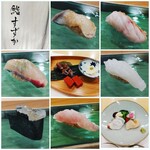

真央吉
3.50
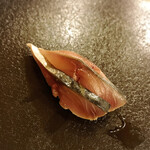
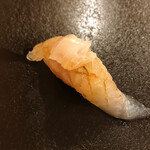
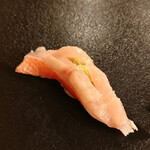
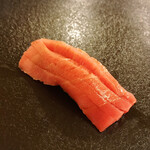
ドメニコドラモンテ
3.60
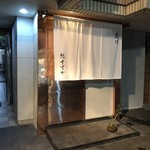
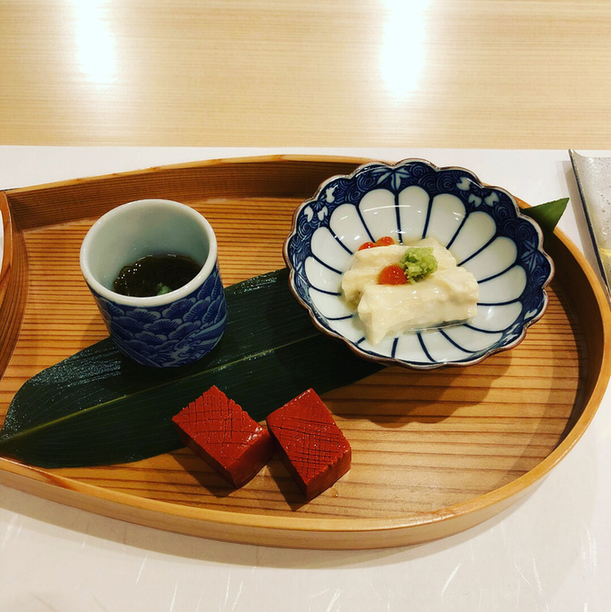
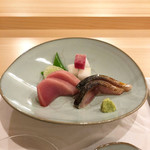
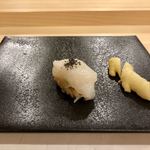
sweety0205
4.00
Great atmosphere, perfect for a date!
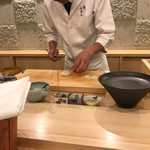
食べ飲み歩き♡人生
3.50
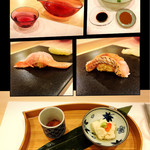

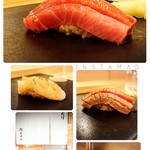
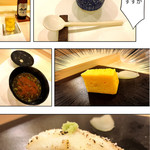
®️7246s
3.80
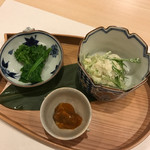
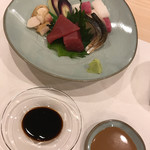

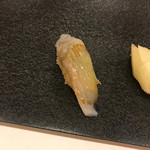
rtake57
0.00
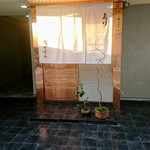
maeken06
3.90
Today's quality is high as always. Everything is refined.
玉かずら
3.00
I made a reservation through FB to visit a place where you can enjoy drinks, appetizers, and sushi at a reasonable price. The restaurant doesn't have set days off, but they close based on reservation status. The staff was very kind and accommodating, and I was excited from the moment I made the reservation. The location was easy to find, and when I arrived, it was a relaxing time with a good atmosphere, comfortable chairs, and a clean counter. We opted for the basic 8000 yen course, and while the food was satisfying, the variety of sake and appetizers was limited. The sushi was made with special red vinegar rice, and while the quality was decent, it didn't quite meet my high expectations. The selection of rolls was also limited. In the end, we left after just over an hour without ordering any additional dishes. The chef, who trained in Tsukiji, had a traditional Kanto-style approach. Overall, it was a decent experience, but there were some areas for improvement.




辣油は飲み物
3.70
This is a stylish sushi restaurant located a little less than 10 minutes' walk from Marutamachi Station. It is situated in a quiet corner of the old furniture district, and the door is made of copper! Upon entering the restaurant, the walls are a combination of concrete and tiles, and the counter is made of white lacquered wood. The interior is stylish yet warm and inviting, making it comfortable and not too formal. The restaurant has been open for 1 year and 2 months, but its unique location and interior design in Kyoto are quite surprising. The course menu mainly focuses on nigiri sushi, which is great for sushi lovers. In a city like Kyoto where Japanese restaurants abound, focusing on nigiri sushi instead of a full course meal is a win-win situation for both the restaurant and the customers. The chef trained in Tokyo, which is why many of the fish are sourced from Tsukiji Market. Despite this, the course menu is priced at 8,000 yen, which is quite reasonable. The chef's nigiri sushi has a good balance of rice and topping, with the rice being slightly firm and not too soft. The vinegar flavor is not as strong as it looks, but it has a slightly strong acidity, which is typical of Kyoto-style sushi. The well-formed rice is a highlight, but the only downside is the temperature. This is likely due to the rice being cooked only once during business hours. If you visit later in the day, the cold temperature of the rice may be a drawback. Since the essence of sushi lies in the rice, it is important to address this issue promptly. As a customer, visiting earlier in the day may reduce this risk. Despite these points, the restaurant offers a very reasonable price and is a rare find in Kyoto for authentic Edo-style sushi. I look forward to seeing how the restaurant evolves in the future. One other point to note is the excessive use of "aburi" (seared) sushi. Out of 11 pieces, 4 are seared, and even the appetizer includes a seared dish, which is a bit too much. The aroma from searing is quite strong, so reducing the number of seared items would improve the overall dining experience and leave a cleaner aftertaste. The sake I had was Ittiki Junmai Ginjo from Tamagawa Sake Brewery, Shuppari from Sawaya Matsumoto, and Bakuren Chokaraguchi from Kamenoi Sake Brewery. The appetizer included fresh yuba (tofu skin), silk mozuku seaweed, and Kyoto burdock. The appetizer reminded me of Kura no Happosai, a famous Kyoto dish. The yuba was creamy and rich, while the mozuku seaweed was finely sliced with a subtle vinegar flavor. The following nigiri sushi course included swordtip squid with bamboo charcoal salt and vinegar, fatty amberjack with a side of green onion, and seared golden eye snapper. The swordtip squid was tender and flavorful, while the amberjack was moist and firm, providing a delightful texture. The green onion added a nice touch to the dish. The golden eye snapper was exceptionally flavorful, likely aged to enhance its taste. Served with salt, it allowed the natural richness of the fish to shine through. Next was red tilefish and spotted halibut, followed by a combination of sea urchin and sweet shrimp. The spotted halibut was tender and fatty, while the sea urchin and sweet shrimp melted in the mouth. The combination of flavors was excellent, although the slightly low temperature of the rice became more noticeable at this point. In between, a cleverly crafted lotus root bun provided a crunchy and sweet interlude. Lastly, the tuna lean meat marinated in soy sauce was chewy and highlighted the marinated flavor.




forever friends
4.20
On the first night in Kyoto, we had a course meal at "Suzuka". This restaurant was also recommended by a fellow reviewer on MyRebi. I had the 8,000 yen course with two friends, including Kiritaro★ from Kyoto who I was meeting for the first time. The meal started with three types of appetizers, followed by dishes like vinegared mozuku seaweed, yuba (tofu skin), and red konjac. We also had sashimi, including two types of fish and marinated mackerel. The nigiri sushi course included various toppings like squid, striped jack, flounder, sea urchin, and shrimp. The warm lotus root manju was a nice touch in between the sushi. The tamago (egg) with medium fatty tuna and soy-marinated salmon roe were delicious. The miso soup was made with red miso in a clear broth. The dessert was a red vinegar sushi rice served with hojicha (roasted green tea) panna cotta. The sushi was meticulously prepared, with attention to detail in every piece. The pricing for such a high-quality course meal was very reasonable at 8,000 yen. The restaurant, run by a couple, had a warm and welcoming atmosphere, making the dining experience enjoyable and relaxed. The homemade hojicha panna cotta was a perfect ending to the meal. Overall, it was a satisfying and delightful experience, with delicious sushi and a pleasant ambiance. I love Kyoto, and the conversation between my Kyoto friends and Kiritaro had a soothing and enjoyable tone. I look forward to dining together again in the future. Thank you for the wonderful meal!

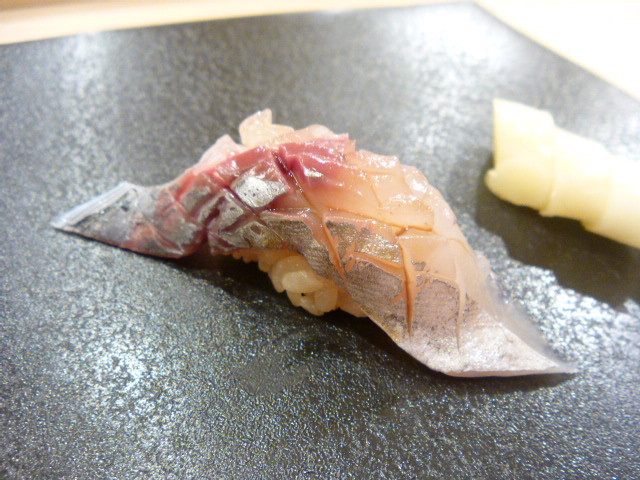
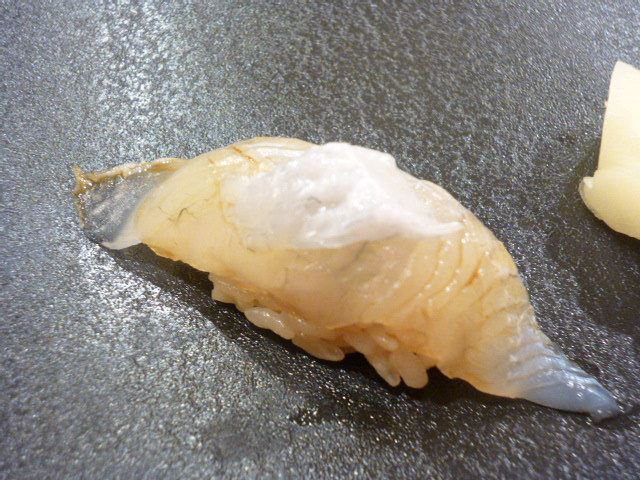

ヨシノちゃん
3.80
During the cold season, sushi tastes even more delicious. So, I went to have sushi once again! The restaurant has a sleek L-shaped counter with a modern yet traditional Japanese atmosphere, thanks to the concrete walls. The owner and the young female chef are very welcoming and provide a soothing experience. The omakase course costs 8000 yen and includes three appetizers (seaweed vinegar, fresh yuba, red konjac), sashimi (seared mackerel and bonito), and nigiri sushi. The nigiri sushi included the following:
- Spear squid with two types of salt
- Horse mackerel
- Flatfish
- Prawn with sea urchin
- Kohada
- Lean tuna with soy sauce
- Fatty tuna
- Scallop
- Egg
- Salmon roe marinated in soy sauce
- Simmered conger eel
The flatfish had a nice thickness and firm texture with deep umami flavor. The prawn with sea urchin topping had a dynamic and rustic taste. The lean tuna with soy sauce was impressively tender. Overall, the sushi had a rich umami flavor, and the vinegared rice was moist and tender. In between the sushi, we were served lotus root manju, which was a nice warm touch. The red miso soup with rock seaweed at the end was sweet and comforting. The meal ended with a special dessert from the chef. The highlight was definitely the excellent value for money! The quality and quantity of the meal for the price was very impressive. Among the recent sushi restaurants I've visited, this one had the best value for money. It's a high-end sushi place, but the atmosphere is relaxed and welcoming, making it easy to visit without feeling too formal. I look forward to returning again and am very satisfied with the experience. Thank you for the delicious meal!
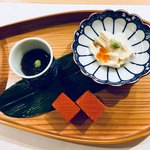
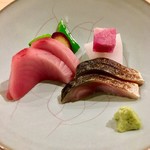
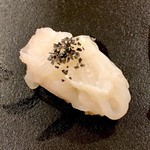
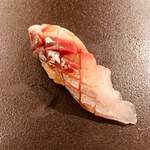
栗太郎★
4.00
First of all, I finally achieved 1000 reviews. I would like to express my gratitude to the reviewers who supported me in this achievement. Also, I am thankful to my friends who joined me on this journey. The restaurant is located near Goshonan, on the east side of Echigawa-dori Yagumaba. It is a sushi restaurant specializing in Edomae sushi. The difference between Edomae sushi and Kansai sushi lies in the use of fish caught in Tokyo Bay for Edomae sushi. The people of Edo took pride in using fresh seafood caught in the sea in front of their homes and called it "Edomae." In my opinion, the pinnacle of Edomae sushi is tuna and shad. Today, I am looking forward to it very much. I arrived a bit early and waited for my friends at the lovely counter with 8 seats. The menu for the day was the omakase course (8000 yen). I started with a bottle of Ebisu beer. I enjoyed the diced ginger served as an appetizer with my beer. The course included various dishes such as sashimi, nigiri sushi, and dessert. The quality of the food was exceptional, and the flavors were delightful. The red miso soup was particularly flavorful and comforting. The meal ended with a delicious hojicha panna cotta dessert. The total cost, including drinks, was around 11000 yen, which I found to be reasonable considering the quality of the food. Overall, it was a wonderful dining experience at this sushi restaurant, and I am grateful to my friends and reviewers for their support. Thank you for the delicious meal.


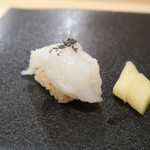

jetsail
4.00
I visited "Igawa Sushi Suzuka" in the Imperial Palace South area after a long time. Tonight, I opted for the omakase course. We had a little celebration, so we decided to have Dom Pérignon Vintage 2006. Now, let's start with today's dishes:
"Appetizers"
- Pickled horse mackerel and sea urchin with gochujang
- Sashimi: Bluefin tuna cheek meat, striped jack
"Sushi"
- Squid
- Horse mackerel
- Seared cutlassfish
- Golden eye snapper
- Sea urchin shrimp
- Fatty tuna
- Lotus root manju (chopstick rest)
- Tilefish
- Gizzard shad
- Salmon roe marinated in soy sauce
- Marinated tuna
- White simmered conger eel (no photo)
- Red miso soup
"Additional order"
- Octopus
- Sea urchin
"Dessert"
- Hojicha panna cotta
"Drinks"
- Sparkling wine: Dom Pérignon Vintage 2006
The hostess and the owner have a refined presence and their harmony is perfect. The atmosphere in the restaurant is calm and comfortable, as always. It's a great place to enjoy high-quality sushi in a relaxed setting. I look forward to visiting regularly. Tonight's meal was incredibly delicious.
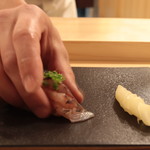
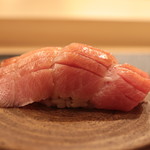
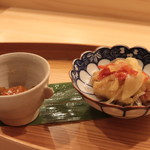
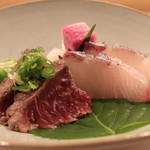
Email Login